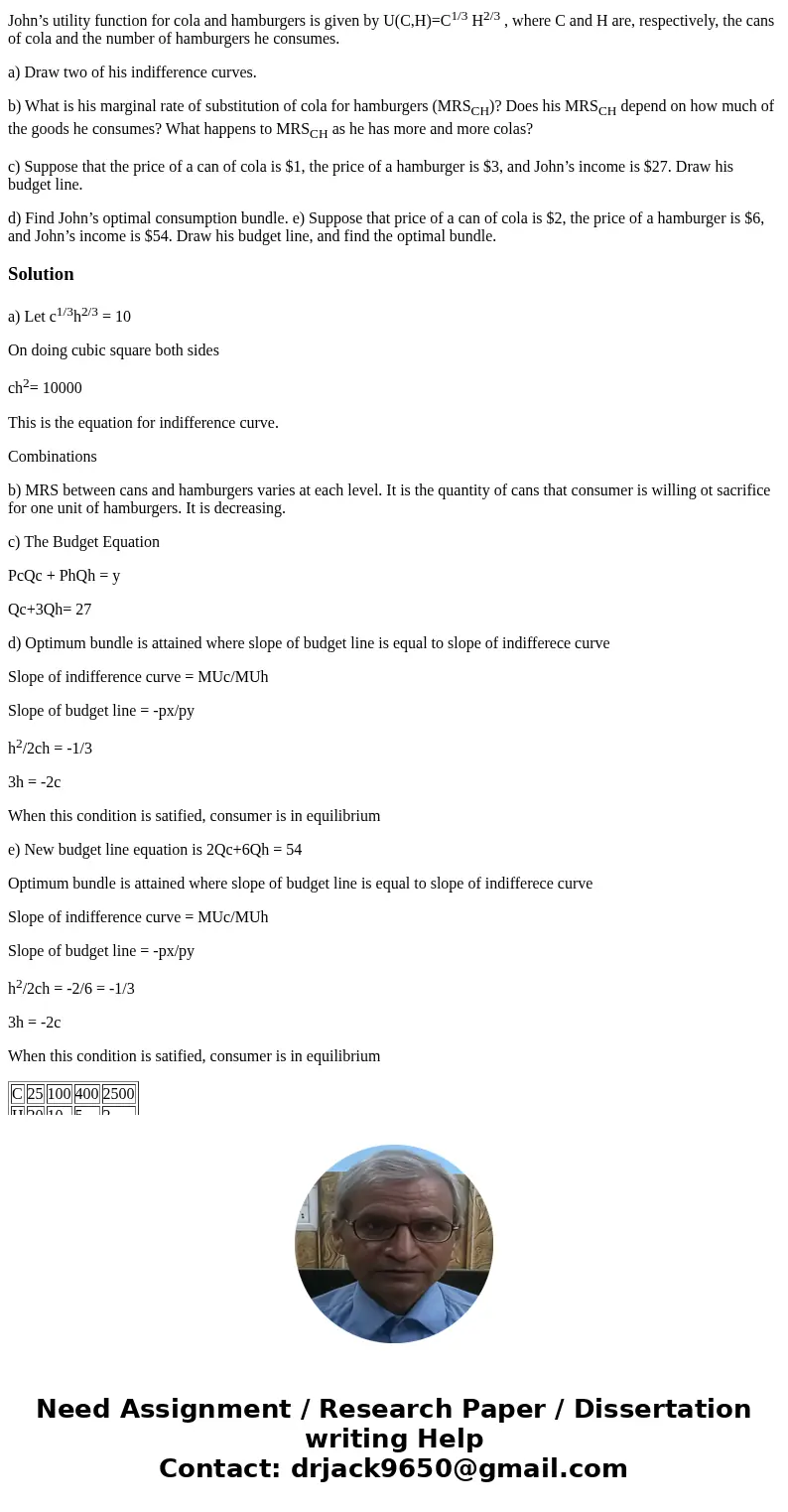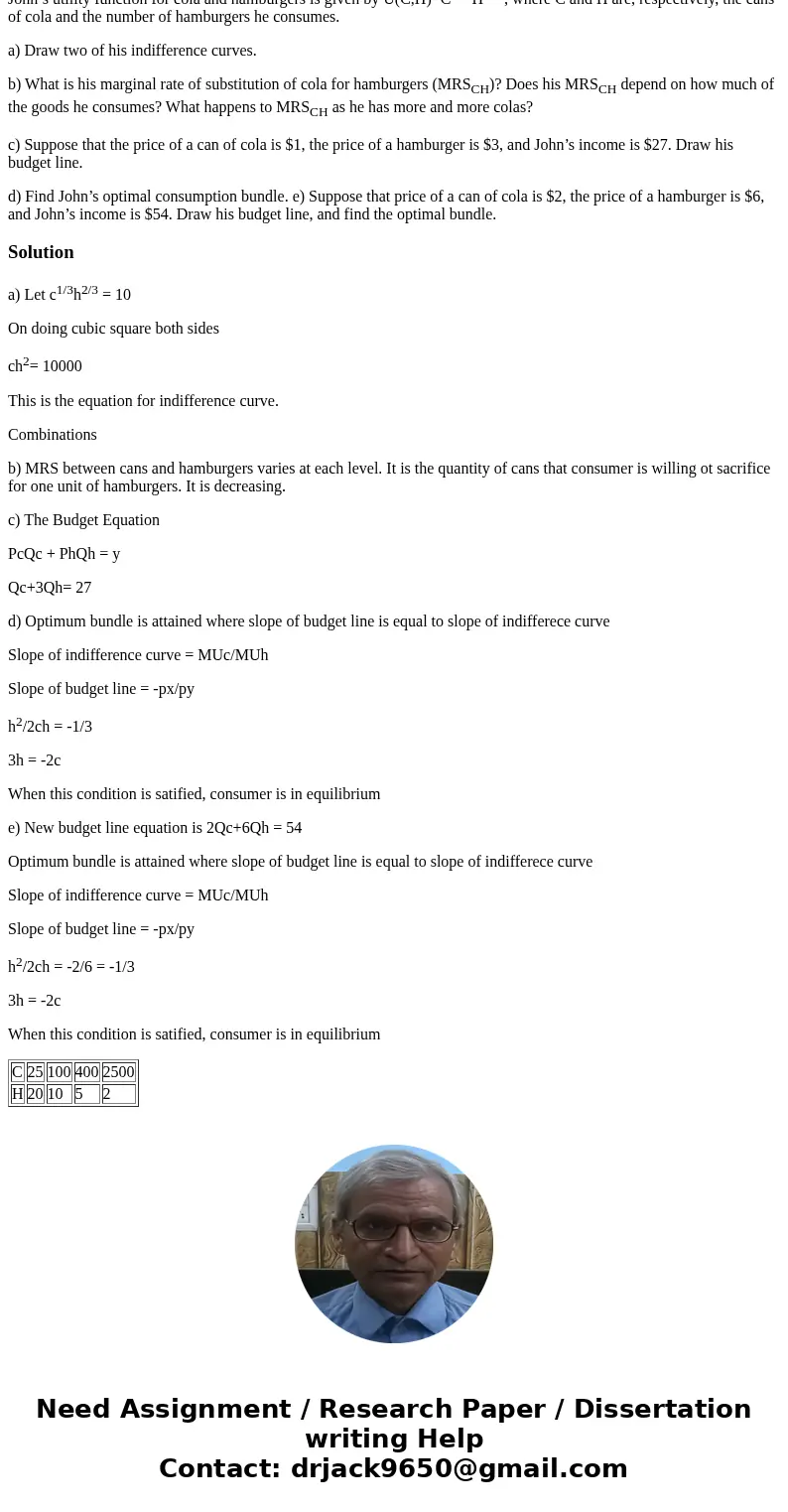Johns utility function for cola and hamburgers is given by U
John’s utility function for cola and hamburgers is given by U(C,H)=C1/3 H2/3 , where C and H are, respectively, the cans of cola and the number of hamburgers he consumes.
a) Draw two of his indifference curves.
b) What is his marginal rate of substitution of cola for hamburgers (MRSCH)? Does his MRSCH depend on how much of the goods he consumes? What happens to MRSCH as he has more and more colas?
c) Suppose that the price of a can of cola is $1, the price of a hamburger is $3, and John’s income is $27. Draw his budget line.
d) Find John’s optimal consumption bundle. e) Suppose that price of a can of cola is $2, the price of a hamburger is $6, and John’s income is $54. Draw his budget line, and find the optimal bundle.
Solution
a) Let c1/3h2/3 = 10
On doing cubic square both sides
ch2= 10000
This is the equation for indifference curve.
Combinations
b) MRS between cans and hamburgers varies at each level. It is the quantity of cans that consumer is willing ot sacrifice for one unit of hamburgers. It is decreasing.
c) The Budget Equation
PcQc + PhQh = y
Qc+3Qh= 27
d) Optimum bundle is attained where slope of budget line is equal to slope of indifferece curve
Slope of indifference curve = MUc/MUh
Slope of budget line = -px/py
h2/2ch = -1/3
3h = -2c
When this condition is satified, consumer is in equilibrium
e) New budget line equation is 2Qc+6Qh = 54
Optimum bundle is attained where slope of budget line is equal to slope of indifferece curve
Slope of indifference curve = MUc/MUh
Slope of budget line = -px/py
h2/2ch = -2/6 = -1/3
3h = -2c
When this condition is satified, consumer is in equilibrium
| C | 25 | 100 | 400 | 2500 |
| H | 20 | 10 | 5 | 2 |


 Homework Sourse
Homework Sourse